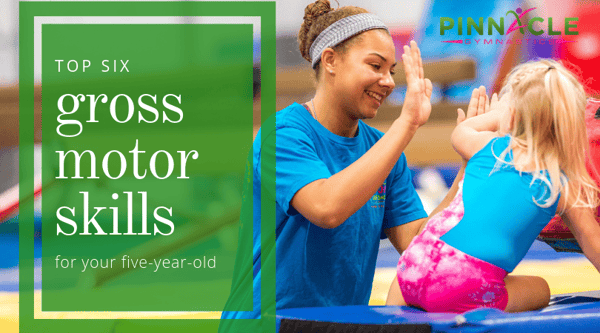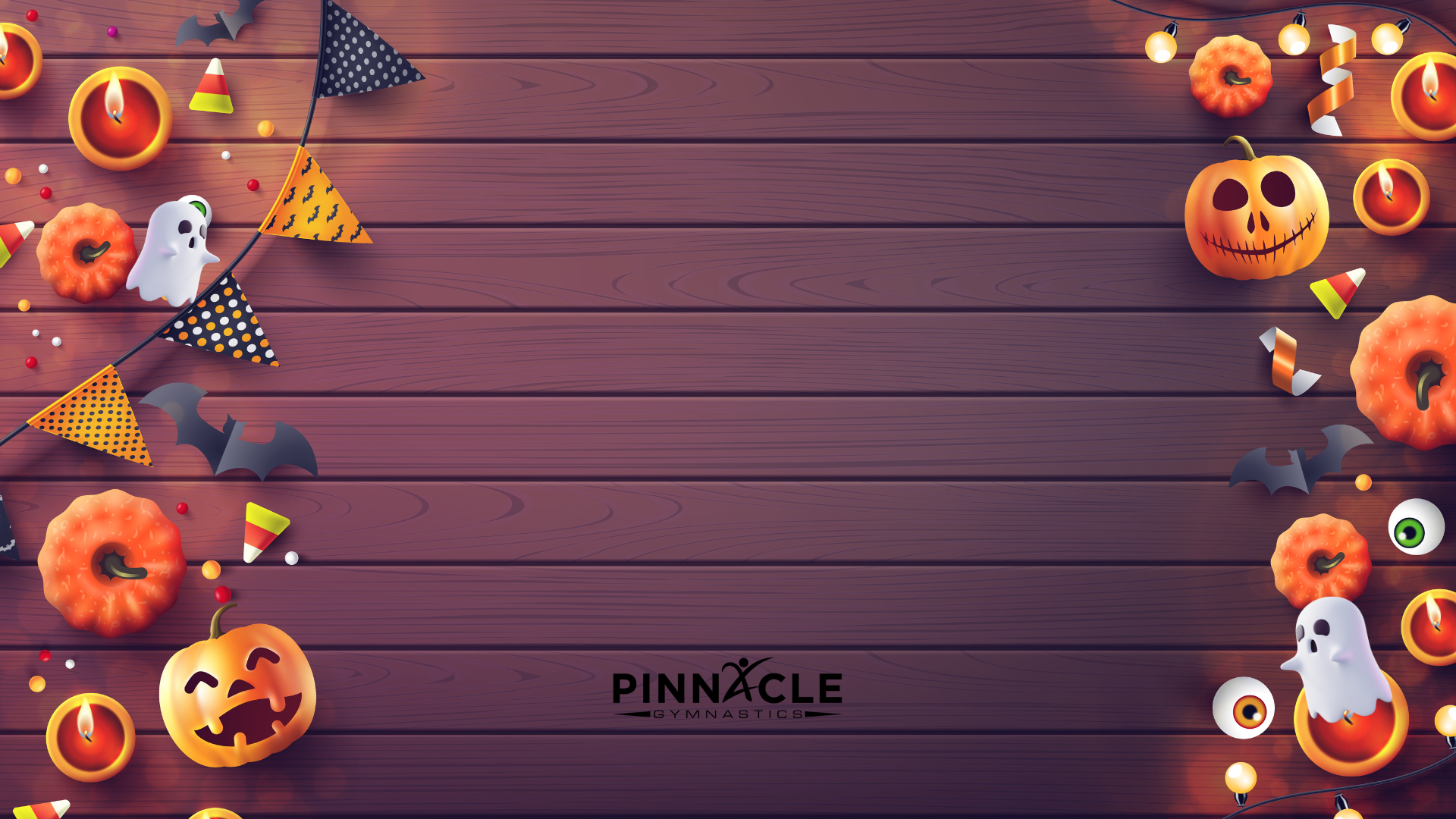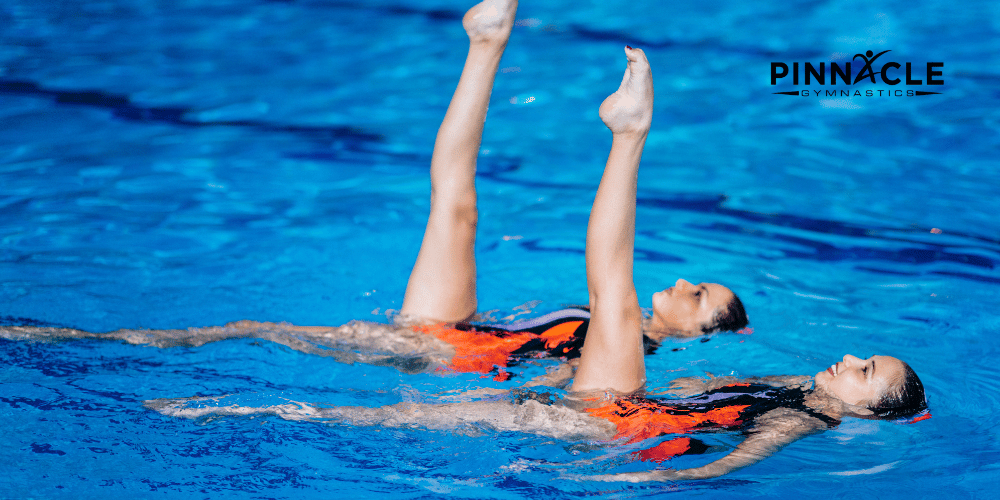Top Six Gross Motor Skills for 5 Year Olds
Gross motor skills are movements that involve the large muscles of the arms, legs, and torso. These skills include jumping, climbing, walking, and much more. Gross motor effects one's balance, coordination, body awareness, and strength. Each child develops at their own rate, however, there are development milestones that can help guide you in knowing what to expect and when. In addition, the milestones can serve as a guide of what to practice and incorporate into your child's play. Gross motor development is linked to success at home and in the classroom. Let's take a look at six skills your five-year-old should practice for kindergarten readiness.
Hop On One Foot for 4-6 Feet
.png?width=600&name=Pattern%20of%20Three%20Movements%20(10).png)
- Create a hopscotch game in your driveway. It will not only be fun to play, but it has many great benefits for your child's development.
- Play the floor is lava. Lay out different objects or sheets of paper and have your son or daughter hop from object to object without touching the lava.
- Jump on the trampoline. Strengthening the jump with two feet will help those who struggle to hop on one foot.
- Jump over the snake. Wiggle a rope or jump rope like a snake and practice jumping, hopping, and leaping over it. Don't let it get you!
Catch a Small Ball Thrown from 5-6 Feet Away
.png?width=600&name=Pattern%20of%20Three%20Movements%20(1).png)
1. Toss and catch a scarf or balloon. Starting with slow moving objects helps your child develop the hand eye coordination and tracking necessary to catch.
2. Bat a balloon. Challenge your child to bat a balloon and keep it in the air for 10 seconds. Keep increasing the length of time.
3. Use a cone to play catch. Toss a ball at your child and have them try to catch it in a cone or bucket.
4. Play catch. Start with a soft foam ball this makes it easy for your child to grab and catch. Start close together and have your child take one step back each time they make the catch.
Keep in mind catching requires a lot of practice. It requires hand eye coordination, motor planning, balance, visual acuity, and depth perception. Patience is key!
Walk Backwards 10 Steps, Placing the Toe of One Foot Behind the Heel
.png?width=600&name=Pattern%20of%20Three%20Movements%20(2).png)
1. Demonstrate and practice. Show your child what heel-toe walking looks like. Practice the action going forward first.
2. Walk on a line. Use a line or rope as the guide. Have your child walk forward and backward, practicing the toe-to-heel motion.
3. Take it to the curb. Use the curb as an opportunity to practice this skill.
4. Practice on the balance beam. Find a balance beam at a local playground, visit an open gym, or enroll in a gymnastics class. The balance beam is the perfect place to master the art of toe-to-heel walking. It is taught in almost all beginner classes.
Balance on One Foot for Three Seconds with Closed Eyes.png?width=600&name=Pattern%20of%20Three%20Movements%20(3).png)
1. Play Sturdy Birdy. Sturdy Birdy is a Fat Brain Toys game for children ages 5-7. The game includes many different balance challenges including standing on one foot and balancing with your eyes shut. This game is sure to have your child smiling and having fun while building their gross motor skills.
2. Introduce your child to yoga. Yoga is the perfect opportunity to work on balance, coordination, and control. Plus, it will likely be a great calm activity to help your child unwind.
3. Play the freeze game. Play your favorite tunes and have your child dance, skip, or run until the music stops. When the music stops, freeze. Once they have the game down have them freeze on one foot or with their eyes closed.
Throw a Small Ball About 12 Feet to a Target .png?width=600&name=Pattern%20of%20Three%20Movements%20(4).png)
1. Play bean bag toss. Teach your child how to play Cornhole or simply set up hula hoops as targets and see how many bean bags they can toss into the hoop.
2. Bucket toss. Practice throwing tennis or softballs into a bucket. Start close and move back after successful attempts.
3. Water balloon darts. Create a target with chalk and see if you can hit the bullseye with the water balloon.
4. Play basketball, baseball or football in your backyard. The more opportunity your child has to catch and throw the better they will become.
Hang on a Bar for 5 Seconds .png?width=600&name=Pattern%20of%20Three%20Movements%20(11).png)
1. Provide monkey bar challenges. Take a trip to the playground and practice the monkey bars. See if your child can make it one step further each time.
2. Animal walk around the house. Pretend to be a bear, a dog, a cat, or a crab and crawl or walk around the house. Animal walking builds arm strength.
3. Build grip strength. Play with play dough, slime, puzzles, or clothespins.
4. Participate in a ninja class. Ninja classes provide many opportunities to hang, swing, and build upper body strength.
Practicing gross motor activities is valuable and fun! Gross motor helps your child in the classroom, daily life, sports, and helps them develop fine motor skills. Check out more activities for kids here!






